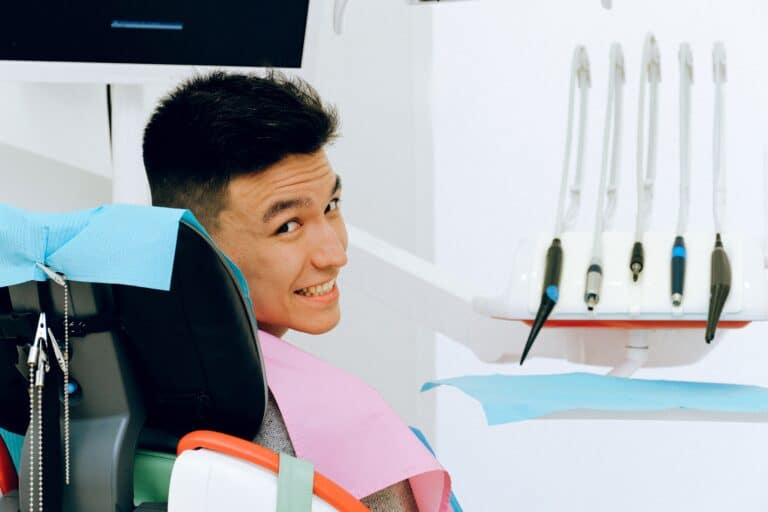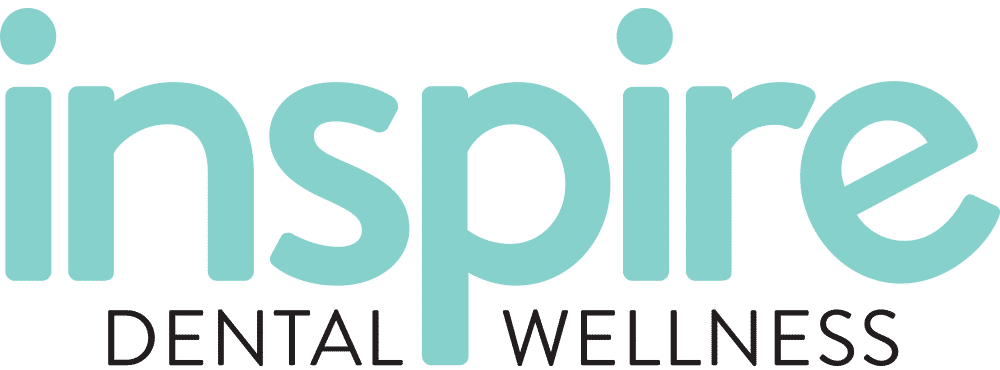Tooth Extractions

A tooth extraction is a common dental procedure that involves removing the tooth from its socket in the jawbone. While most people associate tooth extractions with wisdom teeth, any tooth can be extracted for various reasons, including decay, infection, gum disease and overcrowding. In this guide, we’ll cover everything you need to know about having a tooth extraction in Orland Park, including the reasons for removal, the extraction process and aftercare instructions.
Overview of Tooth Extractions
Tooth extractions are common, and we perform them daily! There are many reasons for extractions, and the team at Inspire Dental Wellness offers various sedation options to ensure your comfort.
Reasons for a Tooth Extraction
There are several reasons why a dentist may recommend tooth removal. These can include:
Impacted Tooth
Three types of impactions could lead to tooth removal:
- Horizontal impaction: When the tooth grows in a sideways position beneath the gums.
- Vertical impaction: If the tooth is in the correct position but remains below the gums, it is considered a vertical impaction (the only type of impaction that doesn’t necessarily require surgery).
- Angular impaction: When the tooth comes in at an angle toward the back or front of your mouth and is at least partially submerged in the gums.
Crooked Growth
In cases where a tooth develops at an incorrect angle (without being impacted), extraction may still be necessary. If left alone, skewed teeth could exert pressure on others.
Oral Overcrowding
If there is not enough room in the mouth for all the teeth, an extraction may be necessary to create space for orthodontic treatment. At many dental clinics, this is the standard procedure. However, at Inspire Dental Wellness, our orthodontic philosophy prioritizes the preservation of natural teeth. Instead of opting for tooth removal as the initial solution, Dr. Erica employs a technique to widen the mouth and create the necessary space.
Cavities and Gum Disease
Gum disease, also known as periodontal disease, is a cause for tooth extraction when it progresses to a severe stage, causing the gums to pull away from the teeth and the underlying bone to deteriorate. If left untreated, cavities can deeply penetrate the tooth structure, compromising its integrity and necessitating extraction when the damage is too extensive for successful restoration.
Tooth Extraction Sedation Options
When removing teeth, there are a couple of sedation options to consult with your dentist about. These options include:
- Nitrous oxide: Often referred to as “laughing gas,” nitrous oxide is delivered through a mask or nose-piece prior to extraction. This is a good option for those people who don’t want to be heavily sedated.
- Oral conscious sedation: Medicines such as diazepam, midazolam, triazolam, and lorazepam are typically taken orally about an hour before surgery and are sometimes used in combination with other sedation options.
- Intravenous (IV) sedation: IV sedation may be the best option for those suffering from extreme dental anxiety. A combination of sedative and pain medication is delivered to the bloodstream via an IV line, offering the highest level of sedation of the three options.
The Tooth Extraction Process
Here’s a step-by-step breakdown of the extraction process:
- Anesthesia: The dentist will apply local anesthesia to numb the area around the tooth. This ensures that you feel minimal discomfort during the extraction.
- Accessing the tooth: If the tooth is impacted, the dentist will make a precise incision in the gum tissue to gain access to the underlying bone.
- Loosening the tooth: Your dentist will carefully loosen the tooth and detach it from the surrounding tissues using specialized instruments.
- Removing the tooth: After loosening the tooth, your dentist will extract it from the socket. The tooth may be sectioned in certain cases to facilitate a smoother removal.
- Cleaning the socket: When the tooth is extracted, the dentist cleans and disinfects the socket to eliminate any potential infection.
- Closing the incision and socket: The incision will be sutured closed with surgical stitches, and a gauze pad will be placed over the area to manage bleeding and encourage blood clot formation.
- Dental bone graft: In some cases, a dental bone graft may be recommended to help prevent any loss of bone in the jaw.
Tooth Extraction Aftercare
Proper aftercare is essential for healing. Bite on a gauze pad for 30 minutes to control bleeding, and avoid smoking or using straws for 24 hours. Apply an ice pack to reduce swelling, and take any prescribed pain medication as directed. Stick to soft foods for the first day, gradually reintroducing a normal diet. Maintain your oral hygiene routine, avoiding the extraction site for the first few days to promote healing.
Our Service Benefits
At Inspire Dental Wellness, we prioritize your comfort and satisfaction by utilizing the latest dental technology to ensure efficient and effective treatment. Our equipment enhances diagnostics and procedures, providing you with the highest quality care. Our patient-focused team is dedicated to creating a welcoming environment where you feel valued and supported throughout your dental journey.
Our Patient-Centered Approach
At Inspire Dental Wellness, we are committed to a patient-centric methodology that values your well-being and comfort. Our compassionate team creates a welcoming atmosphere during your visit. We promote transparent communication, enabling you to voice apprehensions and ensure you receive information about your treatment strategy. Explore our testimonials page to gain an understanding of our empathetic approach.
Payment Options for Tooth Removal in Orland Park
Looking for a tooth extraction without insurance near you? That’s no problem! We also understand that dental expenses can be a concern, which is why we offer a variety of financing options to make our services more accessible. This includes customized dental membership plans designed specifically for our practice and your family’s requirements. Our in-house membership plan can help make your visits more affordable, even without dental insurance.
Trust Us for Dental Oral Surgery in Chicago
Looking for tooth extractions near you? Contact Inspire Dental Wellness today to schedule your tooth extraction or consultation. Our compassionate team is dedicated to providing exceptional care and supporting your journey to optimal oral health!
